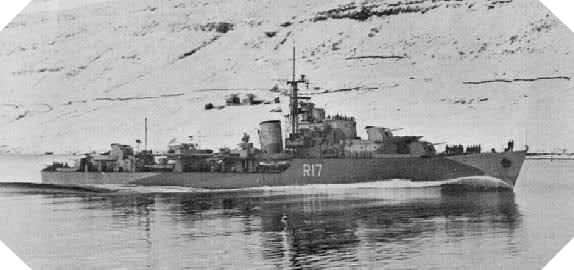HMCS Algonquin
Index of Allied warships during Operation Neptune
History, technical sheet and photo

HMCS Algonquin history
When the Second World War broke out in Europe, Great Britain became heavily dependent on maritime supplies, which became the prey of German submarines. To ensure their safety, the British reinforced their navy forces and launched the production of several destroyers of class V. It is within this framework that the HMS Valentine was launched on September 2, 1943.
Five months later, this warship was given to Canada, which baptized it HMCS Algonquin and then reinforced the 26th destroyer squadron.
As part of Operation Neptune, the HMCS Algonquin operated within Force J heading for Juno Beach and bombarded the German Nan positions on 6 June 1944 for the benefit of Canadian land forces.
Shortly after the Battle of Normandy, the Allied troops could no longer support Allied troops because of the limit of the range of their armaments and HMCS Algonquin deployed in the North Sea as part of the fight against the German maritime forces.
HMCS Algonquin technical sheet
Creator: Great-Britain
User: Canada
Denomination: H.M.C.S. Algonquin
Class: Valentine-class destroyer
Crew: 250 sailors
Armament (1944): 4x 120 mm guns, 2x 40 mm guns, 4x Oerlikon 20 mm guns, 8x 533 mm torpedo tubes
Displacement: 2,743 tons
Speed: 31 knots
Length: 110,57 m
Beam: 10,87 m
Draught : 3 m
